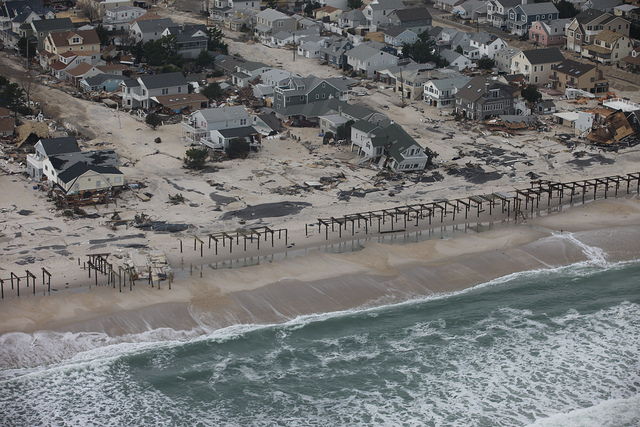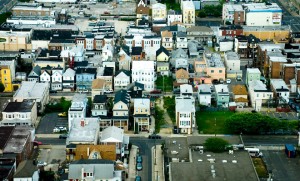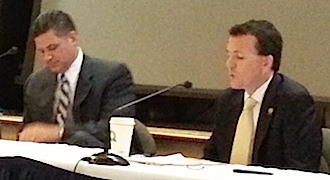New Jersey Future Blog
Sprawl and Drought
September 25th, 2002 by Tim Evans
- Governor James E. McGreevey signed an executive order Sept. 22 that in effect places a one-year freeze on new development in three Atlantic County communities to protect their water resources during the state’s prolonged drought.
- There’s no question that sprawling development can make drought conditions more severe, according to a report issued in August by three national environmental/smart growth organizations.
- The study found that in the Philadelphia/southern New Jersey region alone, sprawling development that occurred between 1982-97 prevents between 25 and 59 billion gallons of rainwater from reaching vital underground water systems each year – enough water to supply the household needs of up to 1.5 million people.
- We won’t have to stop growth if we grow smarter. Smart growth techniques that steer development away from forests, wetlands and other lands essential to recharging groundwater supplies can mean more water, and more sustainable growth, for everyone.
(Source: “Paving Our Way to Water Shortages,” published by American Rivers, the National Resource Defense Council and Smart Growth America, August 2002.)
SMART GROWTH: SMART ALTERNATIVE TO NO GROWTH
Over the last decade, studies have linked suburban sprawl to increased traffic and air pollution, as well as rapid loss of open lands. Sprawl threatens water quality as rain runoff from roads and parking lots carries pollutants into streams, rivers and the ocean. Sprawl also reduces our water supplies. As roads, parking lots, driveways and roofs replace meadows and forests, rain water can no longer seep into the ground and replenish our aquifers. Instead, it is swept away by gutters and sewer systems.
It’s noteworthy that the communities with a growth moratorium (Galloway, Egg Harbor, and Hamilton townships) are the three fastest-growing municipalities, respectively, in Atlantic County in terms of percent increases. Each grew by more than triple the statewide growth rate of 8.6 percent. At the same time, several of the neighboring cities and boroughs in the greater Atlantic City area lost population over the 1990s, including Egg Harbor City, Folsom, Buena, Longport, Margate, and Ocean City. The public policies that drive investment from these older places onto open township lands are what keep New Jersey from smarter growth.
There is a way to reverse this problem, but it means changing the way we approach development. Smart growth techniques protect farms and forests by encouraging investment in urban and established suburban and rural communities. By directing new growth to places where people already live, we can limit the number of new paved and “impervious” surfaces that cover the landscape, make existing communities more attractive, and decrease the tax demands of new infrastructure.
We may not be able to do much about the weather in the near term, but by using our land more wisely we can protect our water supplies for the long term — and create better places for people to live at the same time.
















